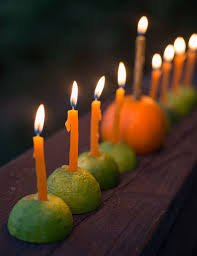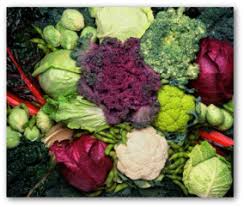What are two of the most prominent signs of winter in my world?
The first sign, of course, is rain. Rain and winter are like woolen gloves for frozen hands. We need and wait for rain which washes, cleans, sprouts, grows, enriches… However, this year, the rain is a bit delayed. Although we received a small first shower, it was not the real thing. And, without rain, we’re a little sad . ☹ The second sign is when the question “What is this green?” appears in the packing house, in the store, in emails and sms messages …. regarding, of course, the wide range of green leaves that are now available. Green leaves come in different shades from green to purple and red, sizes, sweet and bitter flavors, and textures from crunchy to silky. Dark and light, long and round, hard and soft. Plenty of green, and plenty of questions.
Therefore, this week, I prepared a short guide for you, a kind of Guide for the Perplexed, all green, refreshing, and especially delicious:
What do all organic greens have in common?
The color: which is green, of course 🙂 , and the green is chlorophyll, of course. The plant’s chlorophyll is what absorbs the sun's light and drives the process of photosynthesis that produces and transfers energy to all the parts of a plant.
Chlorophyll has a structure that is very similar to hemoglobin and is therefore easily absorbed into the blood, purifying and cleaning it. Chlorophyll improves the health of existing cells, contributes to the generation of new healthy cells, and inhibits the growth of unwanted bacteria and absorption of harmful substances. If your greens are slightly red, yellowish, or purple … that is a sign that there are other useful pigments besides the predominant green pigment, chlorophyll – excellent!!! You can read about the photosynthesis process here On the photosynthesis process, read here
Holes: Yes, yes. You may see holes in your leaves and sometimes fear that crawling friends are hiding in them… as I have written before, these holes are actually an excellent sign that the greens are truly organic 🙂
Health: Organic greens are essential to health and nutrition, especially in times as volatile as ours. They contain chlorophyll, carotenoids, dietary fiber (which removes waste from our body), folic acid, vitamins C and K, and minerals such as iron, calcium, magnesium, potassium, and phosphorus.
And the taste? Greens are suitable for every palate. You can eat any of them raw without cooking / stir-frying / steaming / putting into soup or casseroles … and they can be substituted for one another in a recipe. Each according to his or her taste. Here are recipes for organic greens
The above is well and good, but how does one distinguish among the various greens? Let's make some order 🙂
Kale:
The grandmother of cabbage, kale has the same Latin name, and is considered a super-food with 7 times the beta-carotene of cabbage.
Kale was first distributed in England, where it was considered a delicacy. During World War II, it was used as a supplement to the meager food rationing of the time. Usually, the first question I am asked by Anglo-Saxon immigrants is whether I grow kale. You can read more about kale here: : Organic Kale
Beetroot leaves or chard:
Jerusalemites also call it Pazzi, chard is the same species as beets but does not quickly grow a large root, rather investing in wide, large, fleshy leaves. It is usually possible to keep a chard plant for several seasons, if the summer does not finish it off. Once while struggling to uproot an especially old plant, whose roots were very thick, white, and asymmetrical – I tasted a leaf. It was as sweet as its younger neighbor and eaten fresh on the spot. Here some more on Organic Chard.
Red and green bakchoi:
A member of the cruciferous family, bakchoi is a little bit of cabbage and a little bit of spinach – two greens in one 🙂
Roqette:
Arugula is bitter and has an interesting history which started long before the ‘baby salad leaves’. You can read about arugula here: Organic Arugula
New Zealand spinach:
New Zealand spinach is not spinach at all…but it is from New Zealand. Davka, this is one green that I recommend cooking before eating. You can read more about New Zealand organic spinach.
Tatsoi:
Tatsui, is a member of the mustard family, and Maimonides recommended eating a lot of tatsui in the winter. More about Organic Tatsui.
Turkish spinach:
This green is delicate and tasty even when not cooked. More about the Organic Spinach
Mizuna:
Japanese mustard greens, or spider mustard:
Comes in green and red.
Is that all? Of course not. There are many more tasty and healthy greens. You can read about them in our organic green leaf archive.
and if you come to the store and can’t recognize a green, please ask. We’ll be happy to answer any question, patiently and lovingly.
As for the rain, our most important sign of winter, and the diversity of greens, come dear friends, and let’s welcome them with unconditional love, hope, blessings, music, and dance . organic rain dance
With hope for a green and wet week 🙂
To health!
Yours,
Maggie and the Garden team
We can expect in our organic vegetable baskets: (draft only)
lettuce
broccoli
Rocket
Cucumbers
Tomatoes
Kale
Peppers
pumpkin
cabbage
celery
In the large organic vegetable baskets also:
Beets
Swiss Chard
And Fennel
Organic fruit baskets:
grapefruits
Sweeties
Crembola
And oranges
in our large organic fruit baskets also:
Pears
And clementines
Save















